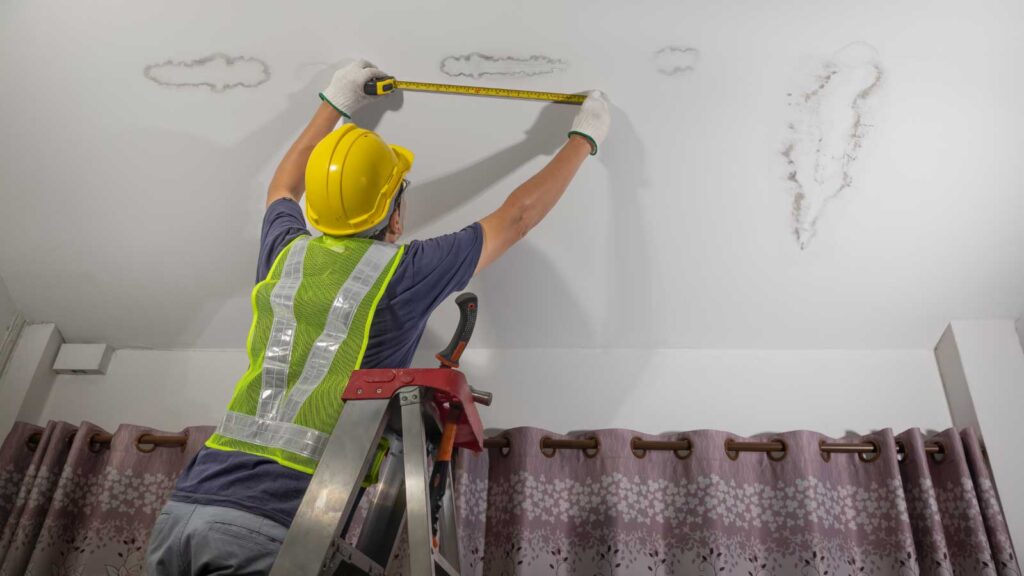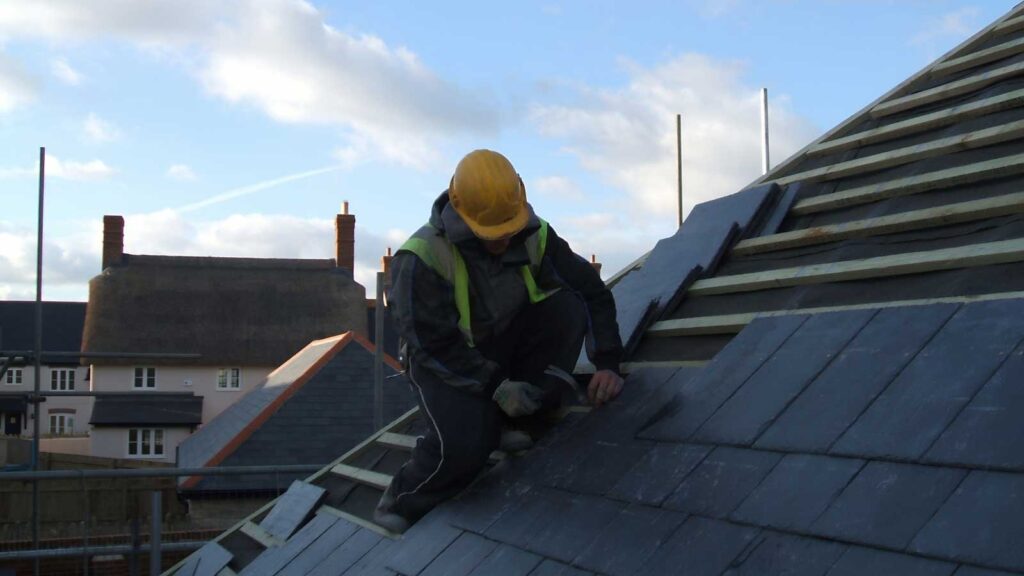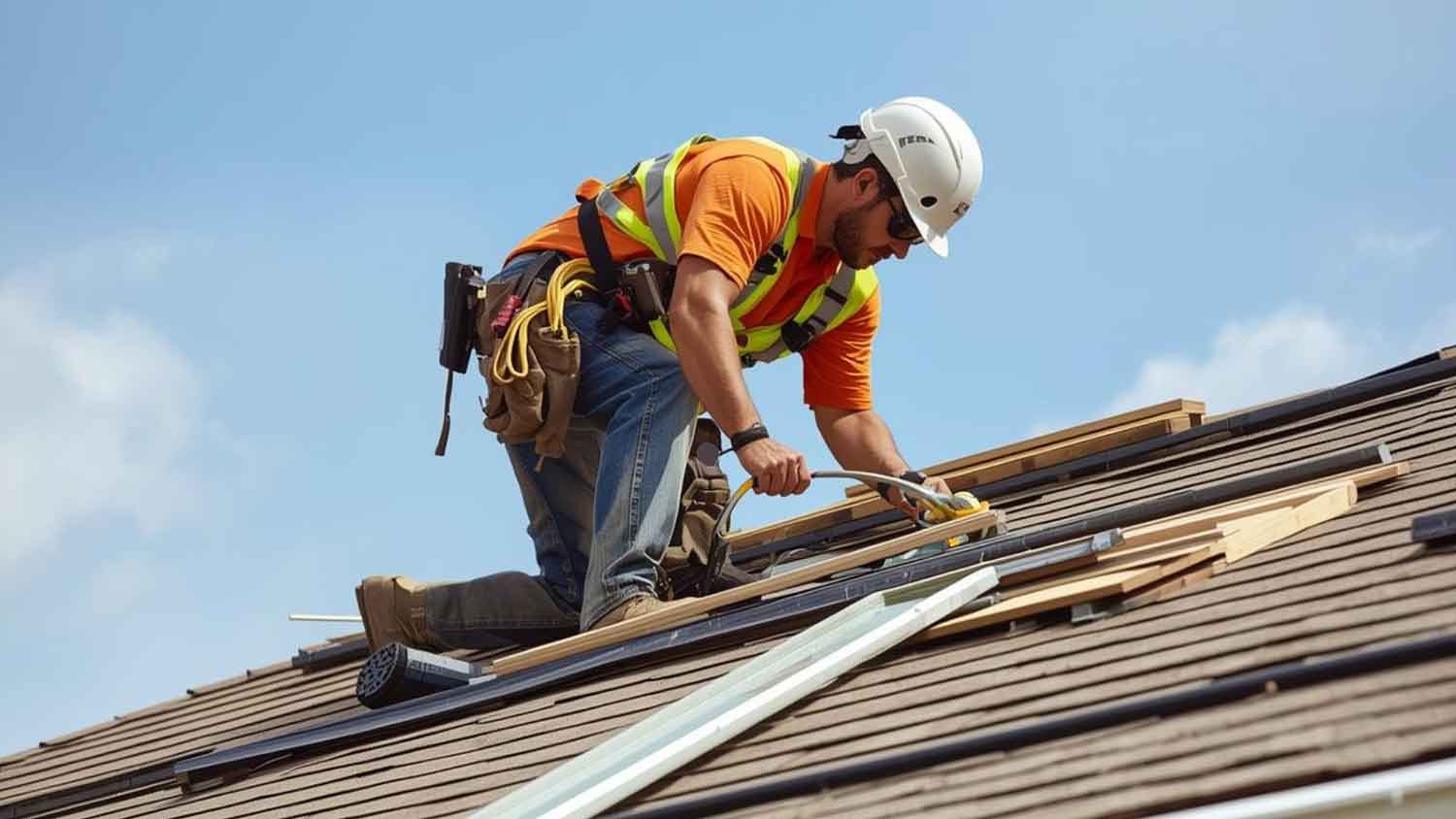Dealing with a roof leak during heavy rain can feel overwhelming. Water finds its way inside quickly, dripping onto floors, soaking furniture, and sometimes spreading faster than you can manage. In those moments, the stress is less about the water itself and more about not knowing the right steps to take.
That’s where the challenge begins. A small leak might seem manageable at first, but rain has a way of exposing every weak point in a roof. Climbing up to fix it during a storm isn’t safe, and waiting too long can mean bigger, costlier damage inside your home. Homeowners often find themselves caught between protecting what’s indoors and figuring out how to stop the problem at the source.
To help you during these tough times, we created this guide to bridge that gap.
We’ll cover practical, step-by-step tips you can use to control leaks during rain, from quick fixes that limit immediate damage to longer-term solutions. And when it’s time for professional help, you’ll learn how knowing when to call a trusted roofing contractor can make all the difference in keeping your home protected.
Understanding Roof Leak Damage During Heavy Rain and Storms
A roof leak during heavy rain is more than an inconvenience. Water makes its way into hidden areas of your home, where it can cause extensive damage. The longer it stays undetected, the harder and more expensive it is to repair.
Some of the main risks include:
- Structural wood weakening due to rot and warping
- Electrical hazards from water coming into contact with wiring
- Ceiling and wall damage, such as sagging drywall or peeling paint
- Mold growth in damp areas that spreads quickly through the home
When leaks go unchecked, the damage builds layer by layer. What starts as a water stain on the ceiling can turn into a sagging roof deck or an unsafe living environment. Even a small opening in shingles or flashing can create a pathway for water to move far from the actual leak point.
Taking quick action during storms makes a difference. Containing the water and scheduling repairs early prevents the problem from escalating. Roof leaks won’t fix themselves, and understanding the risks is the first step in protecting your home.
Emergency Roof Leak Fixes You Can Do Right Now
When water starts dripping inside during a storm, you don’t have the luxury of waiting until the weather clears. You need quick, temporary fixes that limit the damage and protect your home until permanent repairs are possible. Let’s go through practical steps you can take right away.
How to Contain Water Leaks Inside Your House
The first step when dealing with a roof leak is controlling the water inside. If left alone, even a slow drip can ruin floors, stain walls, and damage furniture. Acting quickly keeps the problem contained and prevents unnecessary losses.
Start by placing containers under leaks to catch the water. If the ceiling begins to sag, it often means water is pooling above it. In that case, carefully puncture a small hole to release the pressure and let the water drain into a bucket. This prevents the ceiling from collapsing under the weight of collected water.
Once the immediate leak is managed, move items out of the way to protect them. Electronics, rugs, and personal belongings should be relocated to a dry area. It may feel like a temporary fix, but every small step helps reduce the amount of damage you’ll need to repair later.
Quick Roof Patching Methods in Wet Weather
Fixing a roof while it’s raining is tricky, but in some situations, a small patch can hold long enough to keep water out. The key is using materials that can stick in wet conditions and applying them with care. Even though the repair won’t last forever, it can buy you valuable time until the storm passes.
Emergency roof patch kits are available at most hardware stores, and they usually include tape or sealant designed for wet surfaces. Applying these directly over the damaged area can slow the leak. In some cases, even a strong adhesive tarp patch can work as a stopgap measure. While it may not look neat, function matters more than appearance during a storm.
After the weather clears, schedule a comprehensive roofing inspection to make sure the issue is properly addressed. Temporary patches are not replacements for long-term solutions. They’re only meant to reduce water intrusion and protect your home until a permanent repair can be completed.
Using Tarps to Cover Roof Leaks in Rain
Covering a roof with a tarp is one of the most reliable ways to limit damage during heavy rain. Tarps are strong, waterproof, and can cover larger sections of the roof where water is getting in. When properly secured, they keep rainwater out until repairs can be made.
To work effectively, a tarp needs to extend over the peak of the roof so that water flows down and off, rather than underneath. It should also stretch beyond the leak area for full coverage. Weighting it down isn’t enough. It needs to be nailed or screwed into place with boards to withstand strong winds.
While tarping is not an easy task in storm conditions, it is often the best temporary solution when leaks are severe. If you cannot do it safely, wait until conditions improve or call a professional for emergency assistance. Protecting yourself is just as important as protecting your home.
Safe Ways to Get on Your Roof During Storms
Climbing onto a roof in the middle of bad weather is risky. Wet shingles are slippery, and strong winds make balance difficult. If lightning is present, going up is not safe at all. Before taking any action, assess whether the risk is worth it.
If you decide to climb up, use the right precautions. Secure your ladder on firm, level ground and wear shoes with strong traction. Always have another person nearby to stabilize the ladder and provide assistance if needed. Slow, careful movements are essential to avoid slips or falls.
Even with precautions, not every situation is safe for homeowners to handle. If conditions feel too dangerous, focus on managing leaks inside the house until professional help arrives. A temporary leak is easier to repair than a serious injury caused by a fall.
Permanent Roof Leak Solutions and Professional Repairs
Temporary fixes can hold back water for a short time, but they don’t solve the problem. To fully protect your home, you need permanent repairs that address the root cause of leaks. Let’s look at the most reliable repair methods and when to bring in professional help.
How to Replace Damaged Shingles and Flashing
Shingles and flashing protect your roof from water intrusion, but once they crack, curl, or loosen, leaks quickly follow. Replacing them restores the roof’s ability to shed water effectively. The process is straightforward but requires attention to detail to make sure the repair holds.
When replacing shingles or flashing:
- Lift the damaged shingle carefully using a pry bar.
- Remove the nails securing it and slide it out of place.
- Insert a new shingle, aligning it with existing ones.
- Secure it with roofing nails and cover nail heads with sealant.
- For flashing, remove the old piece, apply sealant, and secure the new metal strip in place.
These repairs are manageable for small areas but can be complex if damage spreads across a larger section. Roof slopes and height also add to the challenge.
Replacing shingles and flashing promptly prevents water from seeping further into the structure. Delaying these repairs often means more costly issues later. Consistent upkeep here is one of the most effective ways to extend the lifespan of your roof.
Fixing Clogged Gutters That Cause Roof Leaks
Gutters are designed to move water away from the roof and foundation. When they clog with leaves, dirt, or debris, water backs up and seeps under shingles. Over time, this causes leaks that appear along walls and ceilings inside the house.
To prevent this, homeowners should:
- Clean gutters at least twice a year, ideally in spring and fall.
- Check for sagging sections that trap water.
- Make sure downspouts extend far enough to direct water away from the foundation.
- Install gutter guards to minimize future blockages.
A clean, functioning gutter system reduces unnecessary stress on your roof during heavy rain. It also helps prevent leaks from starting in the first place.
Maintaining gutters doesn’t take much effort compared to the damage they can prevent. Regular checks and cleanings go a long way toward keeping your roof leak-free.
Best Roofing Materials to Prevent Future Leaks
Some roofs fail because of age or poor installation, but material choice plays a major role in leak resistance. Upgrading to stronger, longer-lasting materials can reduce the risk of leaks in the future. The investment often pays off through fewer repairs and longer roof life.
Popular options include:
- Asphalt shingles: affordable, easy to install, and widely available
- Metal roofing: durable, lightweight, and excellent for shedding water quickly
- Clay or concrete tiles: long-lasting but require strong support structures
- Slate roofing: highly durable and resistant to weathering
- Synthetic options: mimic natural materials with improved water resistance
Choosing the right material depends on climate, budget, and the impact of weather on roof maintenance. Some materials require regular care to perform well, while others last decades with minimal upkeep.
The best way to decide is by consulting a professional who understands both local weather conditions and your home’s structure. Making the right material choice sets you up for long-term protection.
When to Call a Roofing Contractor for Leak Repairs
Not every leak can or should be repaired by a homeowner. Some issues require specialized tools, knowledge, or safety equipment that only a professional roofing contractor can provide. Knowing when to make that call can save you time, money, and stress.
Call a professional when:
- The leak source is hard to identify
- Large sections of shingles or flashing are missing
- There are signs of structural damage or sagging areas
- Multiple leaks appear after a storm
Professional contractors not only repair the problem but also assess your roof for hidden issues. Their expertise ensures the repair lasts and prevents future problems from developing.
If you’re unsure about the extent of the damage, it’s safer to get an inspection than to guess. Having a trusted expert on the job provides peace of mind and protects your investment in your home.
Wrapping it All Up
Roof leaks during rain are stressful, but the key is acting quickly and knowing the right steps to take. Temporary fixes like tarps, sealants, or containers help you manage the immediate problem. Once the weather clears, permanent repairs keep your home protected from future storms.
A strong roof comes down to prevention as much as repair. Replacing damaged shingles, cleaning gutters, and choosing durable materials reduces the chances of leaks returning. Working with a trusted professional ensures repairs are done right, and regular maintenance makes your roof last longer.
If you face more complex damage, involving a roofing/general contractor can make the process smoother. Their experience not only handles repairs but also prevents recurring issues. A proactive approach keeps your home safe, dry, and better prepared for the next heavy rain.





